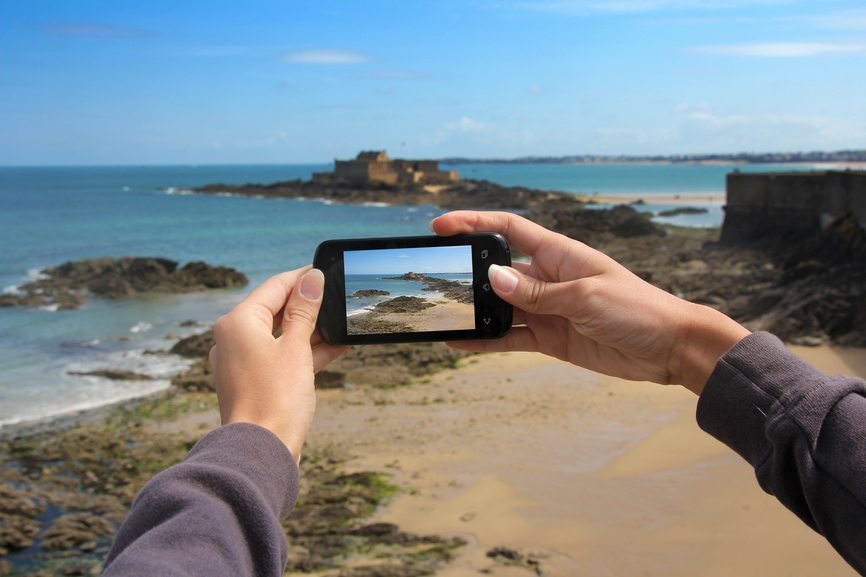This is a guest post by Charles Bell, a freelance writer from New York with a love for all things related to photography. When he’s not trying to get the perfect shot, Charles is usually reading up on the latest photo/tech news and hanging out with his dog, Kip.
—–
When it comes to proper photography, it should go without saying that nothing can replace your proper camera of choice. Personally, I can hardly go without old reliable, aka my Canon ESO Rebel T2i, which honestly hasn’t gotten the love it deserves these past few months. But there’s a good reason for that: sometimes, it can just be cumbersome carrying around my T2i when I can just as easily look to my pocket for a relatively powerful camera.
Yes, I’m talking about my iPhone 5s. While there are definitely more formidable mobile options out there—just look to CNET for evidence—I’m partial to my Apple device, if only because I use a Mac for all my editing purposes. Anyway, I figured that there are clearly more folks like me out there who, despite their love for their cameras, can’t help using their phones for on-the-go photos. With that in mind, I wanted to share a series of tips that have been indispensable for my growth as a photographer.
Embrace Being Random
If there’s one thing I learned from taking mobile photography more seriously, it’s that I needed to get used to having my phone out (for photo purposes) all the time. Now, this would obviously be more cumbersome with my Rebel, but with an iPhone? Easier than … well, almost anything. Most of us have our phones out half the day anyway, so why not put that time to good use instead of messing around on Twitter or Facebook? Always be looking for your next subject to shoot with your phone’s camera, because you never know when inspiration is going to strike. Also, as noted here, you can embrace being random even more by using the “Randomize” function on the Hipstamatic app. This allows you to be truly random with your shots and, who knows, maybe luck will be on your side when you take that next photo.
Be Persistent
Similar to the prior tip, this can (obviously) be utilized by those of you still not OK with using a smartphone to take photos. However, it’s an important note to make and remind all beginning photographers, especially: your first shot is probably (definitely) not going to be the best one. That being said, you shouldn’t overdo it and overwork yourself trying to get what you think is the “perfect” photo. But if you do have a particular shot in mind, stick with it until you are confident that you have captured what you have worked so hard to get.
Crop Your Photos
Of all the tips listed here, this is definitely the most important, especially if you’re just starting out. While you may be tempted to hit the zoom button or touch the screen so you’re “closer” to your subject, don’t do it. Instead, take the advice of Pop Photo and leave any and all adjustments to your own editorial talents. You’re going to learn to love cropping when using your smartphone to take photos, because you will not do yourself (or your work) any good by blurring your image to death with the zoom. As the article notes, “you can crop substantially and still have plenty of resolution left for display on the web.”
And speaking of zooming…
Avoid Digital Zoom
Yes, this was covered briefly in the above tip, but it definitely needs to be repeated: leave that digital zoom function alone! If you absolutely need to use zoom on your phone, make sure you have on that comes with an optical zoom function. This is noted in a post about photography tips on Verizon Wireless, where they also tell readers to avoid digital zoom because “it makes your photos more pixilated.” If you are unable to obtain a device with optical zoom—they recommend a Samsung Galaxy—just rely on cropping in your editing stages. Or you can opt to use any number of photo apps out there that improve the quality of your images.
Natural Light Is Your Best Friend
Last but certainly not least, mobile photographers would be wise to learn the importance of natural light. Think of it this way: Did you ever attempt serious photography with a point-and-shoot digital camera? It’s a lot like using a smartphone’s camera function, though your phone just isn’t capable of being quite that powerful. Still, you probably weren’t using the flash often on the point-and-shoot device because it simply wasn’t good enough—just like your phone’s. Thus, you’ll need to specialize in taking advantage of natural light, which may just mean more photo shoots (or shooting sessions) in the morning and late afternoon hours.

